Algoriddim: The perfect mix
German app developer Algoriddim has carved an App Store niche with a legion of loyal fans, ranging from bedroom mixers to pro DJs and VJs
Working across both Mac and iOS, Munich-based software development studio Algoriddim really earned its App Store stripes in 2011, when its music-mixing tool djay for iPad scooped the Apple Design Award, was selected as the iPad app of the year in 100 countries and also featured in an iPad TV spot – any one of which most app developers would happily kill for. The studio has since built on this success, and consolidated its stronghold in the Music category, by branching out into video mixing with new sister app, vjay for iPad. Like djay, it makes full use of a user’s own media library (whether through iTunes or the iOS device itself) for maximum control and flexibility.
Both apps are packed with powerful functionality, but like many successful app designers, Algoriddim swears by simplicity as the cornerstone of great user interface design – and according to CEO and co-founder Karim Morsy, it often pays to bury more complex features deeper within the interface to reward further exploration by users. “Hiding complex and advanced functionality keeps the first impression clean,” he says.
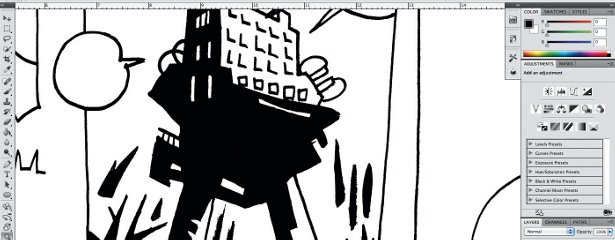
The niche that Morsy has explored should come as little surprise for those familiar with his CV: an avid pianist and DJ himself, he holds a joint diploma in computer science and music: the two dovetailing nicely within Algoriddim’s portfolio.
“I always had a passion for music, which is why developing a music app felt natural,” he confirms. “Our products are easy to use by anybody, not just experts – but at the same time they offer pro quality and technology, and thus also appeal to pros,” he continues.
Many music apps will imitate real-world equipment to ensure familiarity and ease of use for the target market, and djay and vjay are no exception – although they’re careful not to push the skeuomorphism too far, balancing fine detail with a more stylised, app-like look and feel.
“The key ingredients for the interface are defined [by the original hardware], but as we develop for touch devices running the most advanced operating system, there are lots of new possibilities,” reflects Morsy. “Music devices in the past were very expensive and targeted at professionals, so the biggest challenge is to reduce complexity to make our apps more appealing to a wider audience,” he continues.
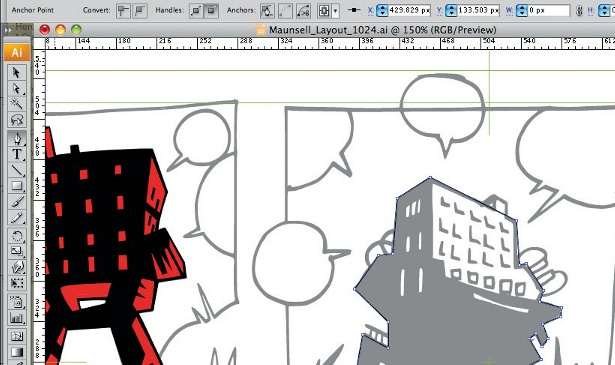
As Morsy points out, professional DJs like himself have become accustomed to using specific analogue equipment – and will often expect digital apps to work just as effectively in terms of both latency and sound quality. “It’s also very important for them to quickly access the most-used features during a live performance,” he adds.
Accordingly, various classic pieces of DJ hardware, including two turntables and a mixer, inspired the UI design for djay – and the album artwork from the iOS device’s music library is also reproduced to add an authentic touch to the ‘vinyl’ that’s being spun. Likewise, many of the button graphics, icons and other interface elements in the app take their cues from their hardware equivalents, in order to make their purpose clear in a simple, effective way without the need to clutter the UI with menus or text labels.
“Other parts are more modern, and completely independent of existing real-world metaphors, such as the record collection – which is based on the UI guidelines of OS X and iOS,” he explains. “That way, users can rely on system-wide consistency.” For the majority of the development cycle, only the core team at Algoriddim will see the product – although at key stages prototypes are shown to “random friends” completely unfamiliar with it in order to gauge how they engage with it, and put its usability to the test.
Morsy insists that the core team at Algoriddim is very democratic and interdisciplinary, with most team members comfortably stepping into multiple roles – although there are specialists within design, development and PR. “It’s a very simple, iterative process: we have a feature idea, talk to our designer about it, he makes multiple Photoshop mockups and then, once we agree on a design, we implement and test it,” he says.
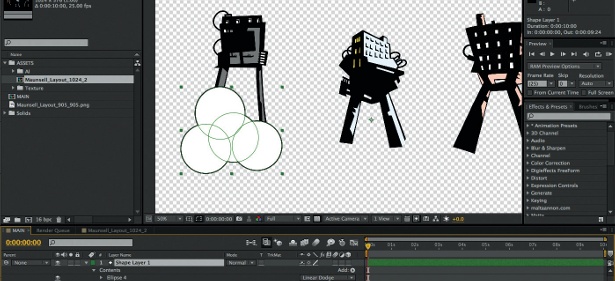
Once the process begins, the studio’s first step is to agree on a feature set, and then firm up the design from there. “We don’t always make the right decisions; that’s why we iterate,” he reasons. “If we’re not sure about something, we’d rather leave it out. It’s always easier to add stuff later than remove things.”
Many of djay’s most powerful and advanced features were developed as a direct response to feedback from the app’s ‘power users,’ who will often request very detailed, targeted functionality. “The biggest hurdle is then integrating these more professional features into the app without making it harder for the first-time user,” admits Morsy. “You have to hide the complexity and power of the application initially, but at the same time have it easily accessible to the pro.”
This follows the same basic principle that’s often applied to successful, addictive games – rather than daunting a new user from the outset, it’s a question of them taking moments to pick it up, but much longer to master.
So how does Algoriddim go about striking this delicate balance, and ensuring that new users won’t get confused or disoriented? “Give it to users that have never used your app before, and just watch how they use it without any help or guidance,” is Morsy’s simple but effective solution. “If they get stuck or frustrated, you’ve done something wrong.” He advocates implementing the most basic set of features into a working prototype as early as possible, in order to get a decent feeling for how the app will work. “Lots of further ideas will often develop while you’re using the app, and you’ll also find out about technical limitations as you go,” he continues.
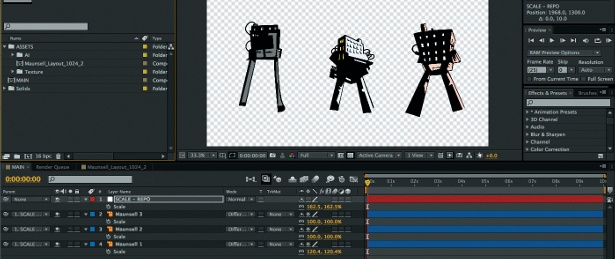
Currently on version 4.0, djay has now undergone four major development iterations in total. “With each iteration, we refined and polished the UI,” explains Morsy. “And as the software advanced technically, we added parts – auto-sync, automatic key detection and more. That affected the UI, but the basic idea and design principles stayed the same through the iterations.”
The app is available in three distinct versions – for Mac, iPad and iPhone – although the pricing tier difference between the latter two devices (£13.99 and 69p respectively) makes it clear where the bulk of the functionality is. Rather than compromising with a universal app, Algoriddim prefers to cater to the unique strengths and weaknesses of each device.
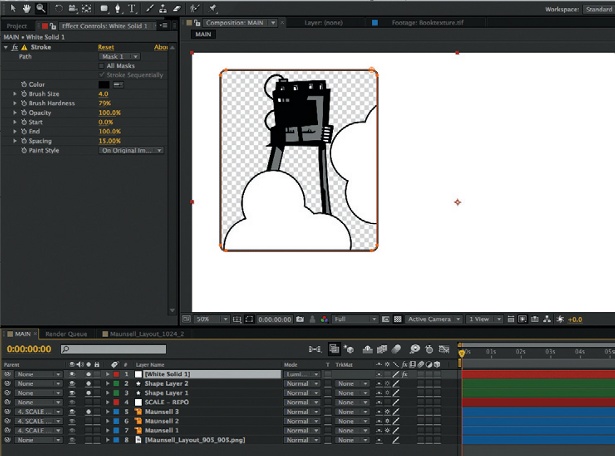
Of course, to some extent being Apple-centric makes this process more straightforward – when compared with porting an app across to Android or Windows Phone, for instance – but the team nevertheless faced its share of hurdles: “There were some technical challenges involved in porting to slower hardware, and there were also challenges porting to smaller screen sizes,” confesses Morsy. “The functionality is mostly dictated by the technical capabilities of the devices: as the iPhone and iPad get more processing power, we can add more functionality,” he reasons. “For example, we recently added time-stretching – changing the tempo of a song without affecting the pitch – to djay for iPhone.”
So what advice can Morsy impart to those looking to emulate the success of apps like djay? “Do what you love, make the best product you can and care about every detail,” is his simple mantra. “In turn, users will recognise, appreciate and tell their friends about it. There is no shortcut to making money: only the best products will generate sustained revenue.”
Discover the 50 best iPad apps for designers at Creative Bloq.
Get the Creative Bloq Newsletter
Daily design news, reviews, how-tos and more, as picked by the editors.

Thank you for reading 5 articles this month* Join now for unlimited access
Enjoy your first month for just £1 / $1 / €1
*Read 5 free articles per month without a subscription

Join now for unlimited access
Try first month for just £1 / $1 / €1
The Creative Bloq team is made up of a group of design fans, and has changed and evolved since Creative Bloq began back in 2012. The current website team consists of eight full-time members of staff: Editor Georgia Coggan, Deputy Editor Rosie Hilder, Ecommerce Editor Beren Neale, Senior News Editor Daniel Piper, Editor, Digital Art and 3D Ian Dean, Tech Reviews Editor Erlingur Einarsson, Ecommerce Writer Beth Nicholls and Staff Writer Natalie Fear, as well as a roster of freelancers from around the world. The ImagineFX magazine team also pitch in, ensuring that content from leading digital art publication ImagineFX is represented on Creative Bloq.
